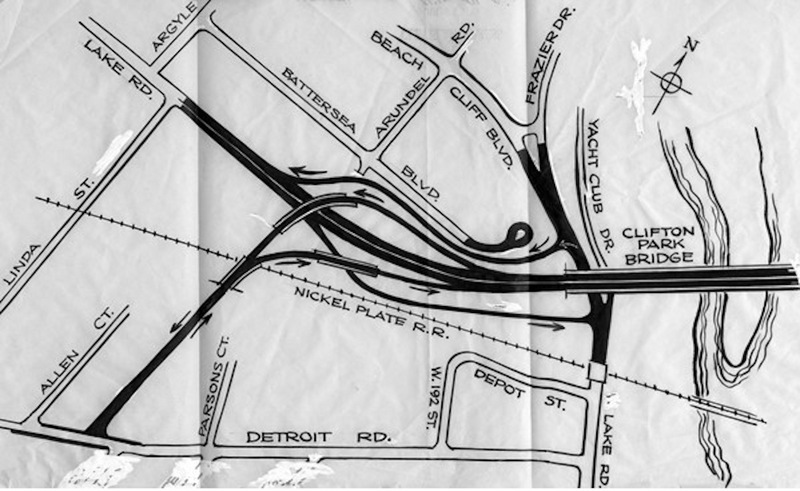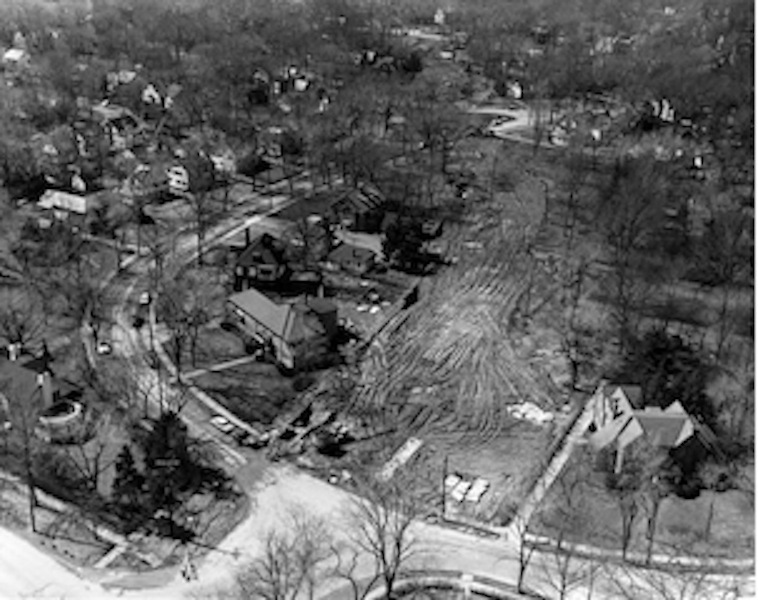Clifton Park Bridge

Opened in 1964, the Clifton Park Bridge connects the cities of Rocky River and Lakewood. It is a section of Clifton Boulevard and the Grand Army of the Republic Highway (U.S. Route 6). The bridge crosses the Rocky River very close to where it empties into Lake Erie.
The Clifton Park Bridge was built by the State Highway Department to alleviate the congestion on the Detroit Rocky River Bridge. The project, however, was not without controversy. The seizure of private property through eminent domain was eventually required in order to build the bridge. Apart from angering the affected citizens, this measures would also mean that each city would lose the money from the property taxes on those sites. The tax issue led to a more than ten-year-long dispute between the cities of Rocky River and Lakewood as the two sides could not agree on the location of the bridge. Rocky River supported the location even though the city would lose tax money. Lakewood on the other hand opposed the location because the bridge would go through the wealthy Clifton Park neighborhood on the northwestern side of the city and cause $1.5 million worth of property to be lost to eminent domain.
Other plans were proposed, such as increasing the traffic on the Hilliard Road Bridge and turning the Nickel Plate trestle into a double-decker bridge for both train and car traffic. The Hilliard Road Bridge plan was highly favored and carefully discussed. The basic question at the center of this debate was whether or not cities had the right to refuse the building of a major highway. This is also known as the "ordinance of consent." In the end, eight homes and fifteen other parcels of land were seized by the state under eminent domain in order to build the bridge with both cities losing valuable property. The Clifton Park Bridge was thus built by the state of Ohio over the objections of the local governments.
The unique curving streets of Clifton Park distinguish it from the rest of Lakewood's grid pattern. It was built starting in the late 19th century and features many historic mansions. It has been the home of many of greater Cleveland's most prominent citizens. Despite Lakewood's fears, the Clifton Park neighborhood continued to thrive even after the Clifton Park Bridge controversy, remaining alive and well even today.
Audio
Images







